Valder Yachts 20m foiling assisted powercat runs close to 50 knots.
DOUBLE ENTRY. Part One
While power cats are certainly not mainstream, they are certainly gaining in popularity and there are some awesome examples available both from production builders and designers. If you are looking for a power cat from 10m to 50m plus, there is plenty available, from local and overseas designers and builders. Powercats come in a variety of shapes and sizes and are designed for anything from coastal cruising to long-range passage making. We look at the difference between displacement, semi displacement, and planning.
The basic difference is in the way each attempts to reduce the hull resistance to motion and this is reflected in the different hull forms employed by the various types.; planning, semi displacement and displacement.
Planing – The Need for Speed
The planing vessel typically has medium to high deadrise hard chine hull to encourage the boat to plane on the water’s surface to reduce wave drag, whereas the typical displacement vessel is round bilged to minimise the wetted surface drag as its slim hulls slice through the water with minimal wave drag.

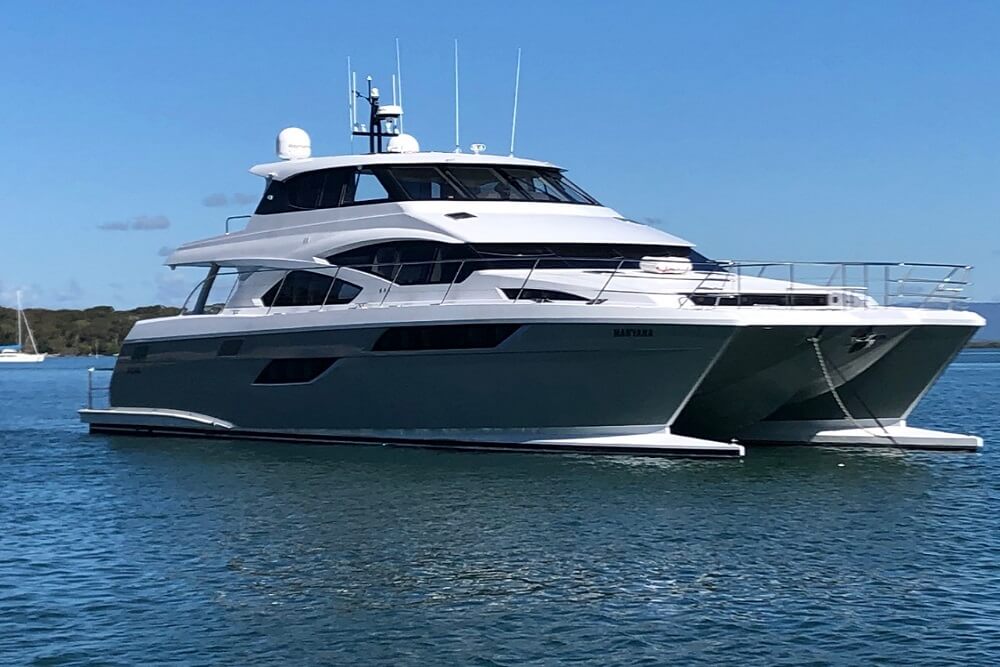
These differences in hull form determine the differing resistances of vessels with similar parameters when moving at various speeds.
Planing powercats can and do quite successfully undertake ocean passages as was witnessed recently with the Trans Tasman crossings of the Roger Hill designed, 17.5m Voodoo. Voodoo covered the 1229NM in 53.5hrs @ 23 knots average!
Semi Displacement – Comfortable Cruising
The typical semi-displacement catamaran has an inherently good sea keeping ability. It isn’t ultra fast, but has a comfortable cruising speed and good fuel economy. Traditionally, it has a top speed not much over 20 knots, with an economical cruise around 16-18 knots, carries enough fuel for long range cruising and still has very generous interior volume.
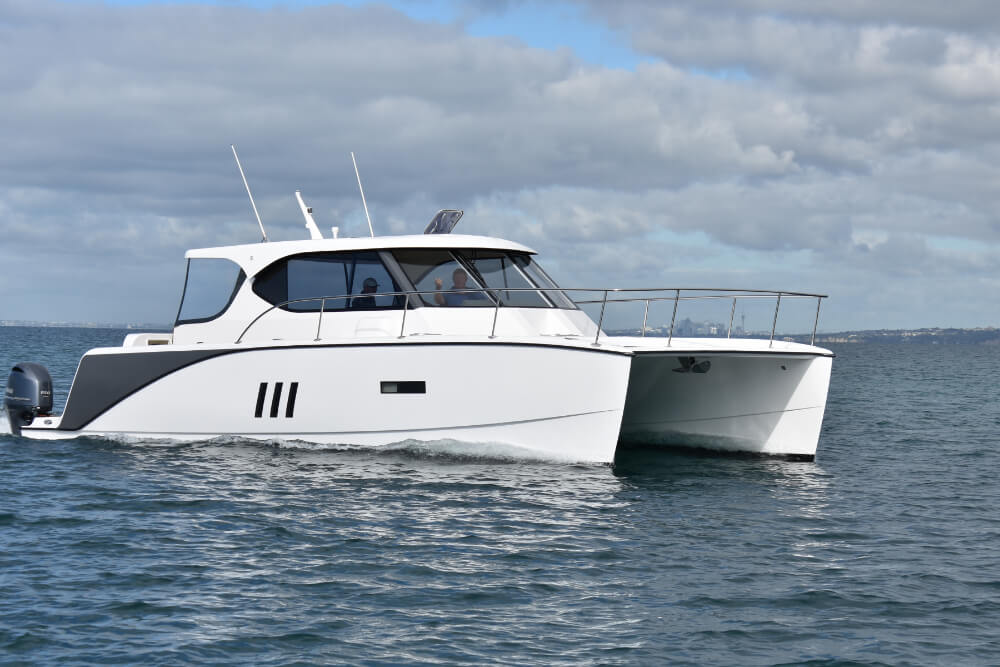
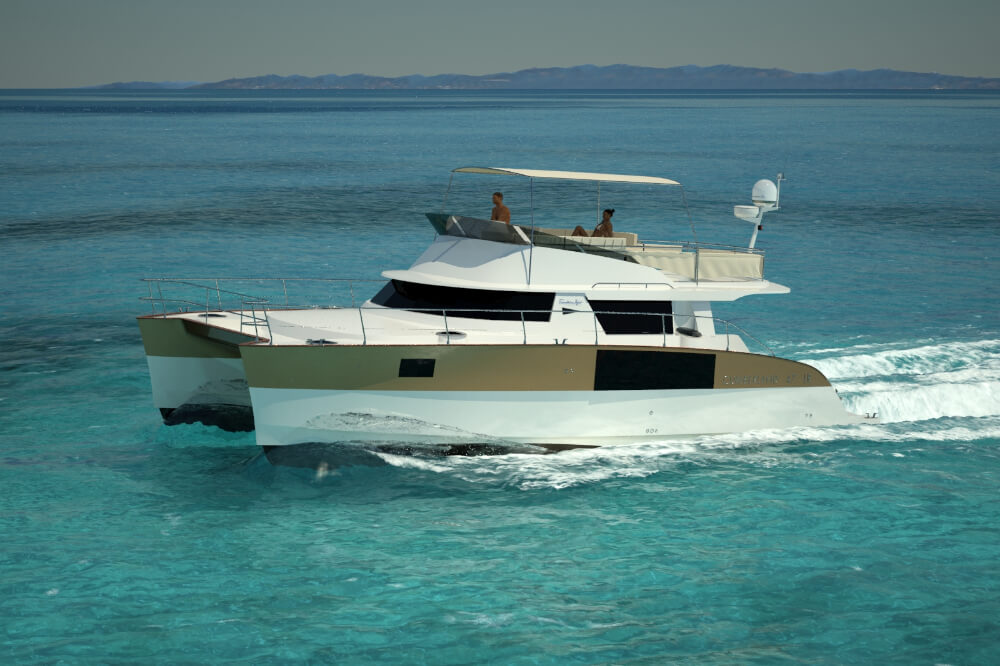
The semi displacement hull seems to range from around 12m to 18m and the sea keeping ability around 15-17 knots can be quite outstanding. The fuel economy for the size of boat can also be very spectacular at speeds in the mid ‘teens’.
Displacement – Slow and Steady
A displacement powercat has a cruising speed anything from zero to its maximum speed – it just depends on where you find it most comfortable for your needs. It’s possible for displacement cats, provided they are long enough, to run upwards of 25 knots quite easily with standard underwater running gear, but anything over that requires a lot of detailed discussion between the designer, builder and engineer as they tend to break with convention and expand the traditional displacement powercat criteria.
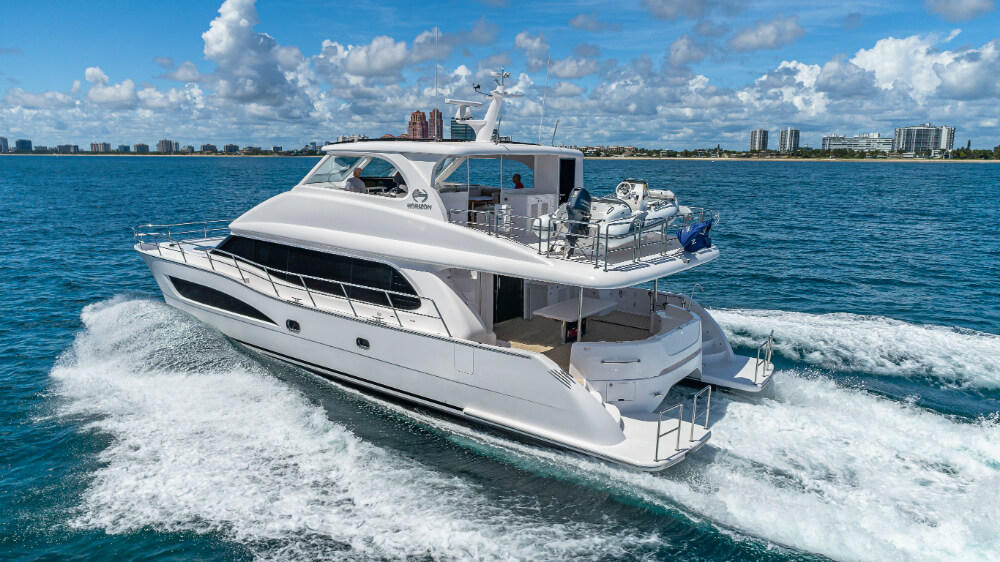
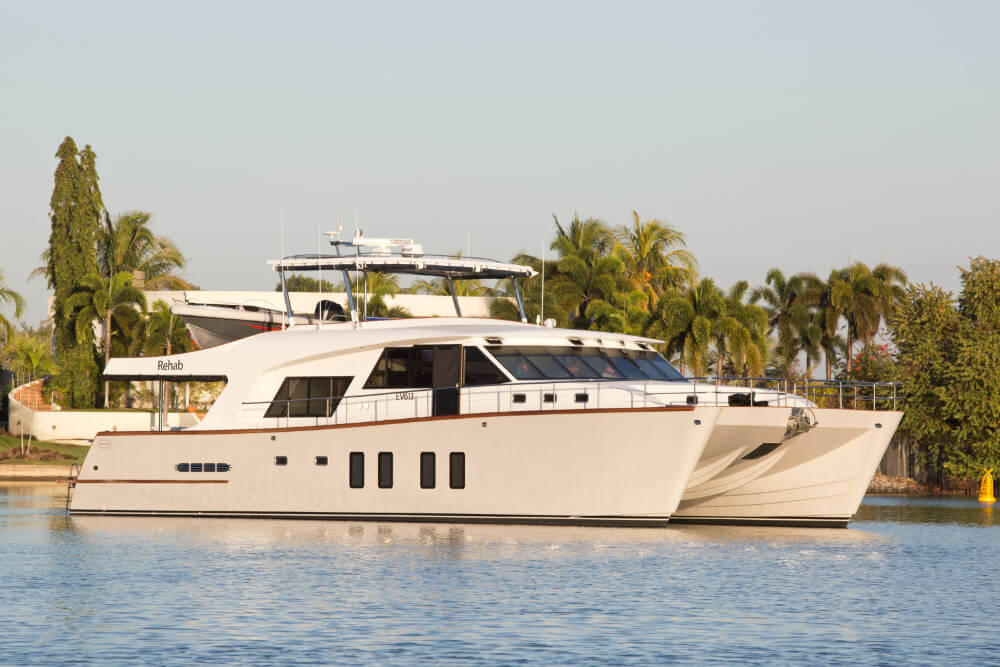
Unlike the planing catamaran, where the power to weight ratio is one of the major determinants of speed, the speed of the displacement catamaran is largely a function of the fineness ratio of the hulls. The displacement is relatively unimportant except for how it impacts on the fineness ratio of the hulls, the height of the wing deck off the water and the longitudinal moment of inertia of the vessel.
The late Malcolm Tennant was a Kiwi designer who enjoyed considerable success over the years, especially with his displacement catamarans.
His approach was the “long and thin” style of easily driven round bilge minimum wetted surface hulls that give performance on a par with planing craft, but with considerably better sea keeping capability and better fuel economy. Tennant regarded the displacement catamaran as the combination of excellent accommodation, comfort and economical performance with good old-fashioned seaworthiness.

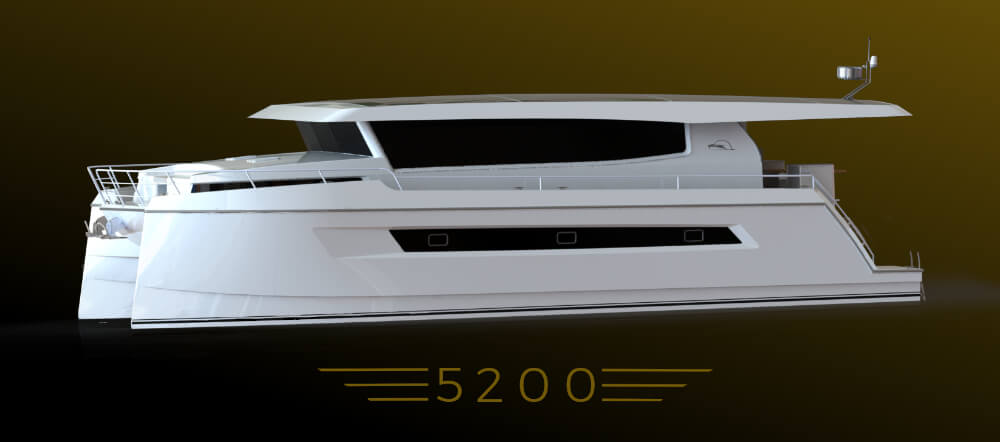
“It seems to me that there is no reason why the “long and thin” principle should not be applied to lighter weight boats with less superstructure and even finer hulls to produce 30 or even 40 knots with modest horsepower”, he was quoted as saying.
Although displacement cats may not be the fastest things in flat water they have demonstrated an ability to maintain high average speeds regardless of the sea conditions. In situations where the high speed planing monohull is forced to drastically reduce its speed the displacement catamaran is able to continue on with very little reduction in performance.
HORSEPOWER –MORE OR LESS
How much power is required to move any particular hull form will vary with speed and these variations are reflected in the shape, and magnitude, of their resistance curves. If you look at the resistance curve for a planing catamaran then it is virtually identical with that of a monohulled vessel with the same displacement. The catamaran may require a little more horsepower because of its lesser planing surface but there is the same initial high drag hump, which requires lots of horsepower to overcome. Once this hump is scaled there is a marked decrease in the hull resistance to motion, which only gradually begins to climb again as speed increases.
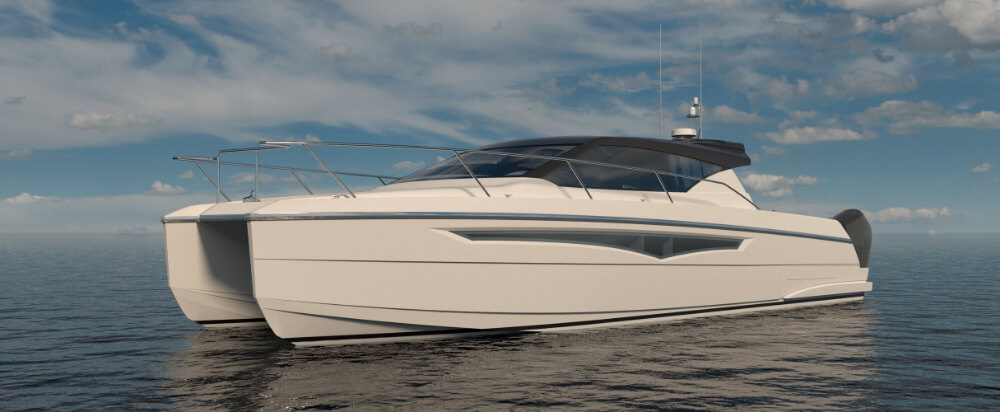
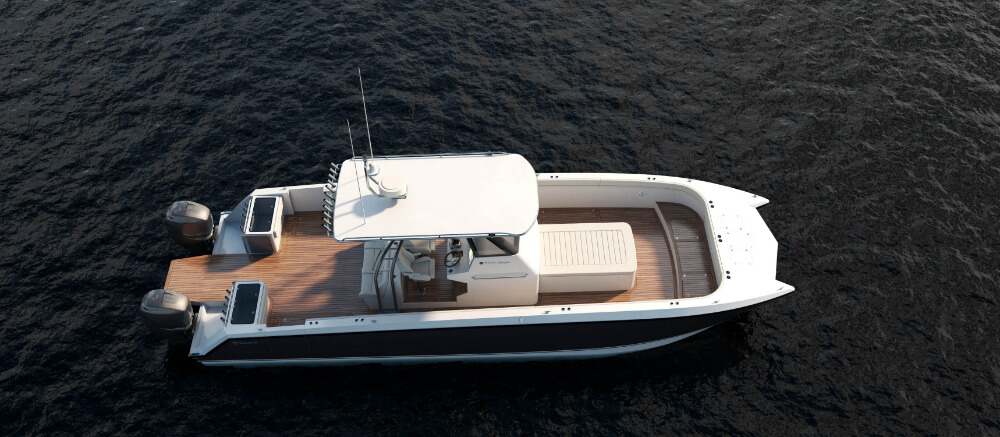
What this means in theory is that once a planing vessel has overcome the initial wave resistance hump it will just go faster and faster as the available horsepower is increased. In practice of course this is not possible because such things as the sea state, and passenger comfort, intervene. Not only that but there is a physical limit to how large an engine can actually be fitted into the boat, and how much horsepower can be developed for a given engine weight, never mind the extra fuel requirements that the larger more powerful engine brings.
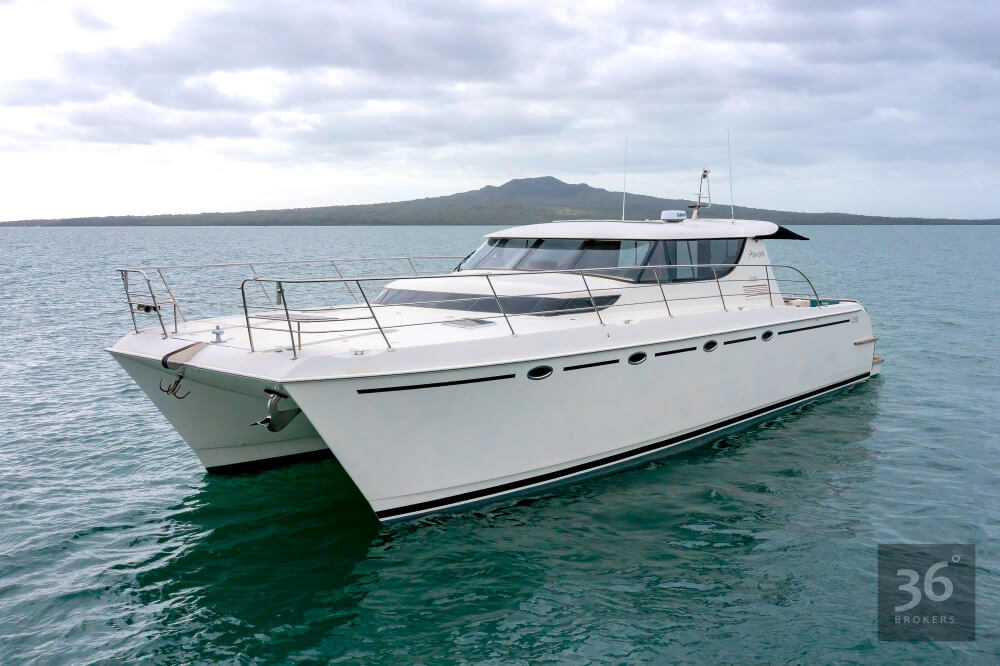
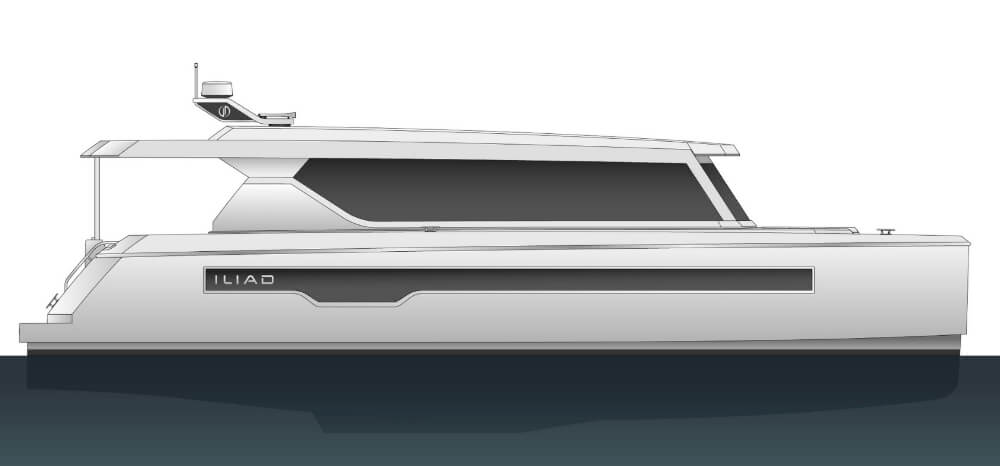
In the case of the displacement catamaran the resistance curve of the catamaran and the monohulled vessel of the same displacement is somewhat different. It is true that they are of the same general type, the smoothly increasing exponential curve, but the catamaran curve will be well displaced toward the high end of the velocity continuum.
In other words; although the displacement catamaran will have a wave resistance determined hull speed just like the monohull, this hull speed would be very much higher. But unlike the planing catamaran, where the power to weight ratio is the major determiner of speed, the speed of the displacement catamaran is largely a function of the fineness ratio of the hulls. The displacement is relatively unimportant except for how it impacts on the fineness ratio of the hulls, the height of the wingdeck off the water and the longitudinal moments of inertia of the vessel.
The Right Choice
The conclusion to be drawn from this comparison is that, as expected, it is a matter of horses for courses. If you want to go fast in a short boat then you have to plane. If you can go a little longer then it is possible that you may be able to have the same performance but with much better fuel economy and comfort.
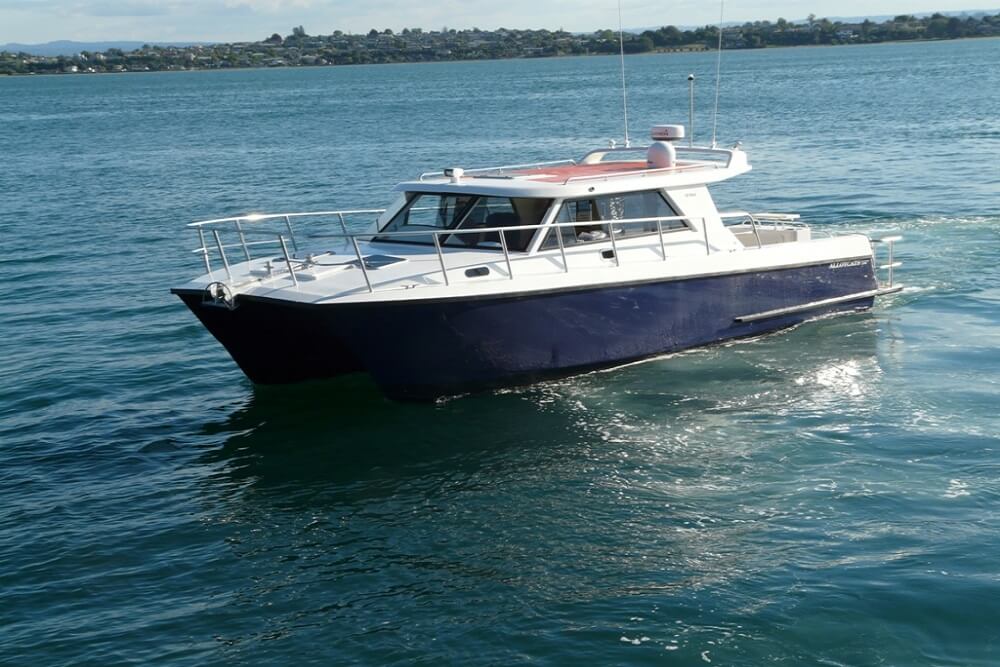
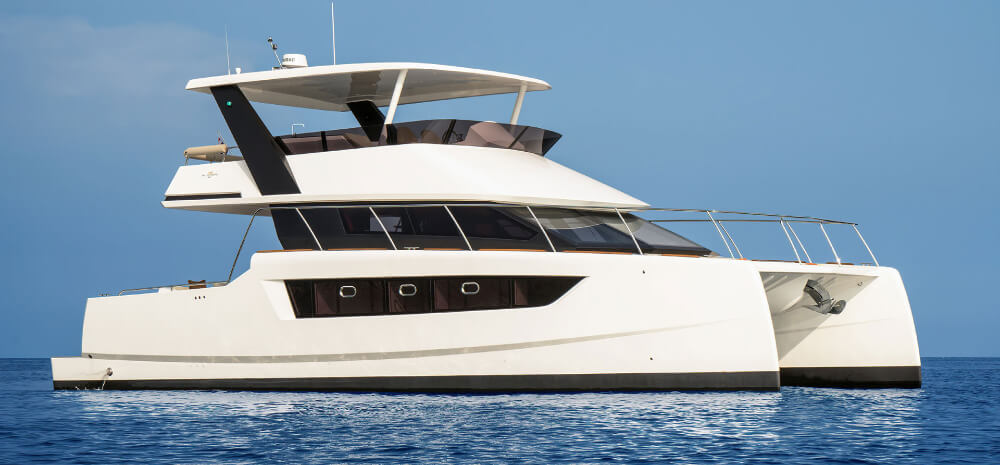
It really is a matter of juggling all the variables of hull length, displacement, power requirements, accommodation, comfort and speed, to see which is going to be the best type of boat for you.
PART TWO
We go into more depth on the performance and handling of the different forms of powercat designs, in a variety of sea states, with some real time data.




